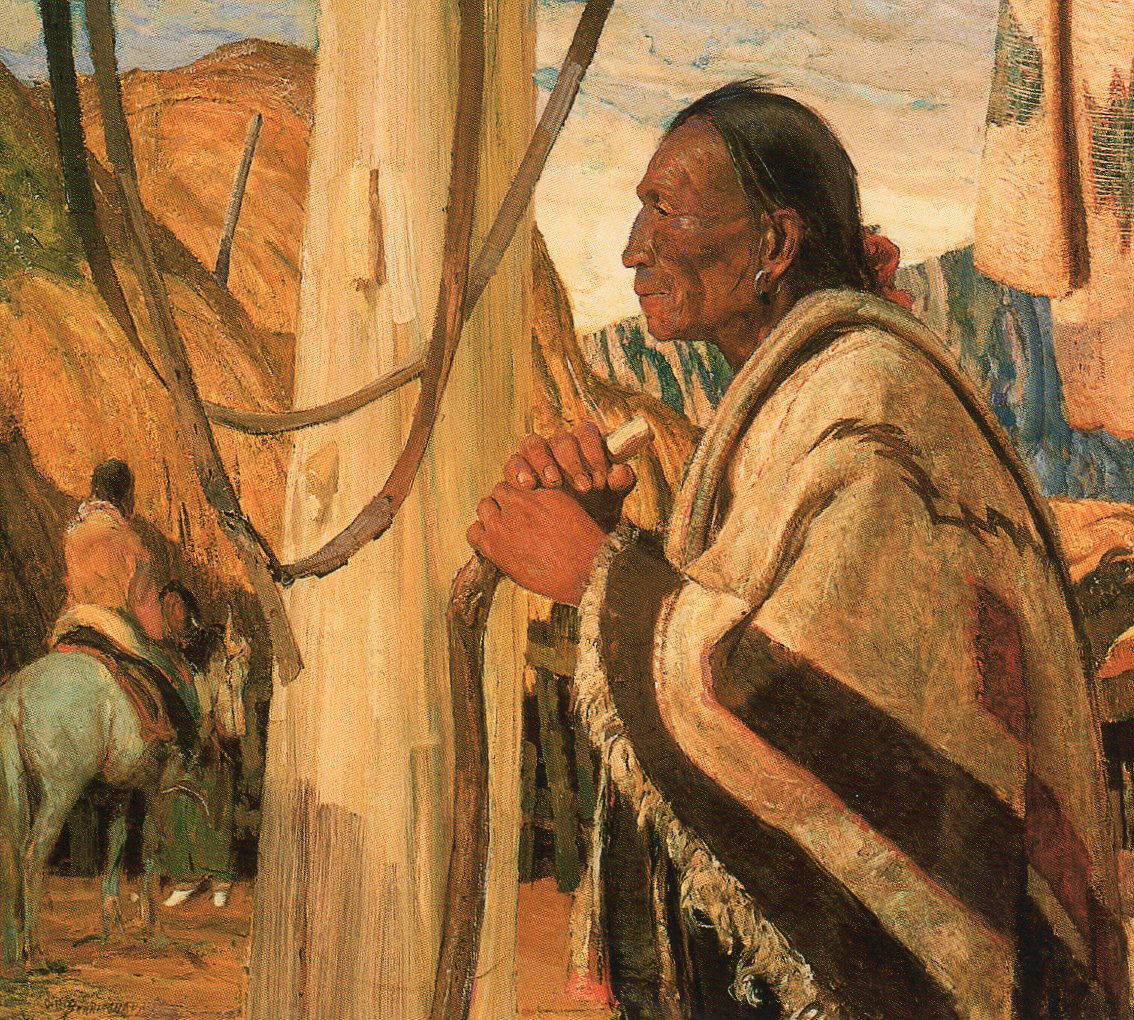For Collectors of International Art
We specialize in the Art and Artists of New Mexico
If you would like further information please email:
Oscar E. Berninghaus
Paintings for sale.....
#1......Taxco Hills......
#2.....Three Indians....Oil on Board...12 x 16....1949
#3.......Watercolour
Oscar Edmund Berninghaus 1874-1952 was an artist who was one of the founders of the Taos Society of Artists and part of the Taos art colony in Taos, New Mexico.
Born and raised in St. Louis, Missouri, Oscar Berninghaus, who received his only fine arts training while attending three terms of night classes at the St. Louis School of Fine Arts, began his career in the applied and commercial arts. At sixteen, Berninghaus joined the lithography firm of Compton and Sons and then, three years later, labored as an apprentice and errand boy at a large and well-known printing company, Woodward and Tiernan, also in St. Louis. Between his work and self-studies, Berninghaus eventually established a diversified career that included at its extremes the production of scenes of western life to advertise the products of the Anheuser-Busch Brewing Company (1910 to mid-1920s) and the design of pioneer subjects to decorate the Missouri State Capitol in Jefferson City, Missouri (1924), the Federal Building in Fort Scott, Kansas (1937), and the Post Office in Phoenix, Arizona (1938). However, it was easel painting and the land and Pueblo people of New Mexico which finally dominated Berninghaus's artistic career.
In 1899, Berninghaus traveled the Southwest as a guest of the Denver and Rio Grande Railroad. The brakeman, who noticed that Berninghaus stepped from the train to sketch his surroundings during the train's frequent stops, took an interest in the artist-passenger. He subsequently changed the course not only of Berninghaus's travels but of his career as well, by suggesting that the artist visit the picturesque town of Taos. Berninghaus stayed only a week on his first trip to Taos but, thereafter, he returned from St. Louis each summer until 1925, when he settled in Taos permanently.
Berninghaus's artistic instincts led to the depiction of commonplace incidents and scenes of daily life, in contrast to the dramatic western conflicts created by such artists as Frederic Remington and Charles M. Russell, or the romantic and idealized scenes created by other Taos artists during the same time period. Braves of the Taos Mountains is an example of the artist's interest in seemingly routine and untroubled moments. The painting depicts-two horsemen riding through desert sagebrush in front of the Taos Mountains, located at the southern end of the Sangre de Cristo range north of Taos. Their braids identify them as Pueblo men, dressed in shirts and pants. In addition, the rider on the left wears leather chaps while the central figure has a blanket wrapped around his lower torso. The horses they ride are small ponies. Berninghaus has made no effort to glamorize either the men or beasts, but rather has presented a life of commonplace activity. While the scene may be low-key, it carries with it a nostalgia for a way of life based in nature, in contrast to the fragmentation and speed of the modern industrial world.
The quiet harmony of the figures and the mountain desert landscape is paralleled by the deft balance of the composition, which divides the painting into unequal but satisfyingly arranged areas of foreground, middle ground, and background. The generally muted colors of the palette and the range of values from the whites of the desert sands to the darks of the mountains do not move to extremes, but stay in middle ranges of intensity and shade, contributing further to the scene's quietude.
